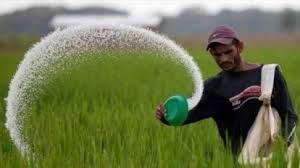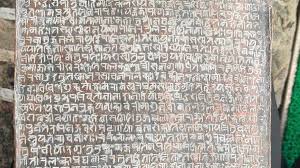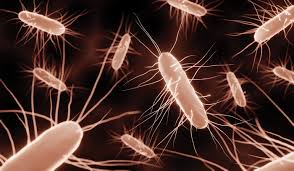Today’s Current Affairs: 24th October 2024 for UPSC IAS exams, State PSC exams, SSC CGL, State SSC, RRB, Railways, Banking Exam & IBPS, etc
Table of Contents
Di-Ammonium Phosphate : Shortage

A shortage of di-ammonium phosphate (DAP), a key fertiliser required at the time of sowing, is undermining crop production prospects for the current rabi season.
- DAP sales in India during April-September 2024 dropped to 45.72 lakh tonnes, a 27.2% decline from 62.83 lakh tonnes in 2023, signalling reduced availability for farmers ahead of sowing seasons.
- Imports fell to 19.67 lakh tonnes from 34.53 lakh tonnes in 2023, and domestic production also decreased slightly to 21.53 lakh tonnes in 2024 from 23.29 lakh tonnes in 2023, creating a supply crunch.
- Farmers are paying ₹1,600-1,650 per bag of DAP, well above the government-fixed MRP of ₹1,350, driven by international costs and shortages.
- While DAP sales fell, urea and other complex fertilizers saw increases. Urea sales rose to 189.11 lakh tonnes from 183.95 lakh tonnes in the same period
- With a government subsidy of ₹21,911 per tonne, but actual costs reaching ₹65,000 per tonne, the import of DAP remains unviable for private players, worsening the shortage.
Amazon Future Engineer Program:

The National Education Society for Tribal Students (NESTS), in collaboration with Amazon, has launched the third phase of the Amazon Future Engineer Program in 50 Eklavya Model Residential Schools (EMRS).
- Amazon Future Engineer Program – Phase 3 implemented in 50 EMRS schools across Andhra Pradesh, Gujarat, Karnataka, Madhya Pradesh, Odisha, Telangana, and Tripura.
- Orientation and training in emerging technologies like blockchain, artificial intelligence, block programming, and coding.
- Four-day workshops are held for teachers to enhance their ability to teach modern technology.
- Students in classes 6-9 will be introduced to computer science fundamentals, and Class 10 students will participate in project-based virtual sessions.
- Objective is to prepare tribal students for careers in STEM by integrating modern technological literacy into the curriculum.
13th Major Port of Galathea Bay:

The mega International Container Transshipment Port (ICTP) at Galathea Bay, located on Great Nicobar Island in the Bay of Bengal, has been officially designated as the 13th major port in India. Kamarajar Port located on the Coromandel Coast (Chennai) was named the country’s 12th major port.
- The ICTP is along the East-West international trade and shipping route, close to key transshipment hubs such as Singapore, Klang, and Colombo.
- This location enhances its importance within global trade networks.
- Located just 40 nautical miles from the Malacca Strait, a key shipping route handling 35% of global sea trade, the port has strong potential as a major transshipment hub for cargo from India’s east coast, Bangladesh, and Myanmar.
- Currently, nearly 75% of India’s transshipped cargo is handled at foreign ports,the ICTP aims to reduce this dependency.
- It could help Indian ports save an estimated USD 200-220 million annually in transshipment charges.
RCS-UDAN : New Airports

The Prime Minister inaugurated three airports under the Regional Connectivity Scheme (RCS-UDAN) in Rewa (Madhya Pradesh), Ambikapur (Chhattisgarh), and Saharanpur (Uttar Pradesh).
- These airports aim to enhance air travel accessibility and will soon commence flights, furthering the mission of improving infrastructure in underserved regions.
- Ude Desh Ka Aam Naagrik (UDAN) was launched as a Regional Connectivity Scheme (RCS) under the Ministry of Civil Aviation in 2016.
- The scheme connects remote areas, promoting tourism and economic growth, and has facilitated over 144 lakh passenger travels in its seven years.
- It supports last-mile connectivity and addresses unserved air routes.
- The first RCS-UDAN flight was inaugurated by the Prime Minister in 2017, connecting Shimla to Delhi.
- Versions of UDAN:
- UDAN 1.0: Awarded 128 flight routes to connect 70 airports (36 newly operational).
- UDAN 2.0: Inclusion of helipads for the first time.
- UDAN 3.0: Introduce seaplanes for water aerodromes, enhancing connectivity in the North-East Region.
- UDAN 4.0: Focused on North-Eastern regions, hilly states, and islands, facilitating operations for helicopters and seaplanes.
- UDAN 5.0: Prioritises Category-2 and Category-3 aircraft.
- UDAN 5.1: Boosts helicopter routes by increasing funding, lowering airfare caps, and requiring one destination to be a priority area.
- UDAN 5.2: Enhances last-mile connectivity with small aircraft, boosting tourism in remote areas.
- UDAN 5.3 and 5.4: To operationalize previously discontinued routes, further enhancing point-to-point air connectivity.
Vijayanagara Kingdom : Copper Plates Discovered

A collection of copper plate inscriptions featuring two leaves from the 16th Century CE was discovered at the Sri Singeeswarar temple in Mappedu village, Tiruvallur district of Tamil Nadu.
- The two leaves of the copper plates strung together using a ring featuring the seal of the Vijayanagara Kingdom.
- The inscription, donating a village to Brahmins by the Raja of Chandragiri, is written in Sanskrit and the Nandinagari script.
- It was engraved in 1513 during the reign of King Krishnadevaraya.
- The Kingdom of Vijayanagar was ruled by Krishnadevaraya from 1509 to 1529 AD.
- After Krishna Deva Raya, Achyuta Raya took over in 1530, followed by Sada Siva Raya in 1542.
- He was known by various titles, including “Kannadaraya” and “Kannada Rajya Ramaramana.”
- He is regarded as one of the greatest statesmen in Indian history and is considered one of the most significant rulers of mediaeval South India.
- The Vijayanagara Empire was established in the Deccan region from 1336 onwards, founded by Harihara (also known as Hakka) and his brother Bukka Raya.
- They made Hampi the capital city (declared a World Heritage site by UNESCO in 1986).
- Vijayanagar Empire was ruled by four important dynasties (Sangama, Saluva, Tuluva, Aravidu).
- The empire lasted from 1336 until around 1660, although it faced a gradual decline in its final century following a devastating defeat by an alliance of deccan sultanates, leading to the capital being captured, looted, and destroyed
Cloud chamber : India Ready To Establish

India is establishing a first-of-its-kind cloud chamber at the Indian Institute of Tropical Meteorology (IITM), Pune.
- A cloud chamber is a scientific apparatus that mimics the conditions required for cloud formation.
- It resembles a closed cylindrical or tubular drum, inside which water vapour, aerosols, etc. are injected.
- Under the desired humidity and temperature inside this chamber, a cloud can develop.
- India is building a cloud chamber with convection properties, as required to study Indian monsoon clouds. Globally, there are only a handful of convective cloud chambers.
- The objective of establishing a convective cloud chamber is to gain a better understanding of cloud physics under conditions commonly affecting Indian weather systems. Thereafter, this knowledge can be used for strategic planning of weather modification.
- The Pune facility will allow scientists to study the seed particles that form cloud droplets or ice particles in a sustained manner.
- Cloud physics basically involves the study of cloud behaviour during normal and extreme conditions; intra-particle interactions inside a cloud; the formation of rain droplets and ice particles; the influence of moisture added into the atmosphere due to cyclones or low pressure systems; and interactions between different cloud layers, among others.
- Scientists will have the flexibility to tailor physical and atmospheric parameters to suit environmental requirements that influence the Indian weather and climate.
Space Docking Experiment (SPADEX):

Hyderabad-based company handed over two 400 kg class satellites to ISRO, which will be part of the Space Docking Experiment planned by the space agency later this year.
- Space Docking Experiment (SPADEX) is one of ISRO’s most significant steps towards developing autonomous docking technology.
- The mission involves two vehicles—‘Chaser’ and the ‘Target’—coming together and connecting in space.
- Docking systems allow two spacecraft to connect in orbit, enabling critical operations like assembling space stations, refueling, or transferring astronauts and cargo.
- It will also test how well the combined spacecraft maintains stability and control after docking, ensuring smooth operations for future missions.
- India’s SPADEX experiment is unique because it focuses on developing indigenous, scalable, and cost-effective docking technology.
- This experiment involves two spacecraft docking autonomously in orbit, demonstrating precision, navigation, and control capabilities critical for future missions.
- SPADEX is designed to serve a wide range of spacecraft sizes and mission objectives, including potential collaborations for building space stations or deep space exploration,”
- The history of docking systems dates back to the Cold War when the Soviet Union achieved the first successful docking in space.
Rajaji Tiger Reserve : Nod To The National Highway Authority

Wildlife panel of the Union Environment Ministry has deferred nod to the National Highway Authority of India’s (NHAI) four-lane project, which was proposed to pass through Rajaji Tiger Reserve and Shivalik Elephant Reserve in Uttarakhand.
- Rajaji Tiger Reserve is spread over three districts of Uttarakhand: Haridwar, Dehradun, and Pauri Garhwal.
- It is located in the Shivalik range of the Himalayas and spread over 820 kms.
- It was named after the famous freedom fighter Rajgopalachari,popularly known as “Rajaji”
- Its location in a transition zone between temperate western Himalayas and central Himalayasenhances the species diversity.
- It forms an important part of the Terai-Arc landscape (7500 km) between the Yamuna River in the northwest and the Sharda River in the southeast.
- The area is covered with diverse forest types ranging from semi-evergreen to deciduousand from mixed broad-leaved to Terai grassland and has been classified as Indus-Ganges Monsoon Forest
Korowai Tribe:

An Indian travel vlogger recently travelled deep into the jungles of Indonesia to meet the Korowai tribe, often referred to as a ‘human-eating’ tribe, and documented his experience on social media.
- The Korowai tribe is a group of indigenous people who live in the southeastern part of Papua, Indonesia.
- The Korowai people have a deep connection to the forest, which they rely on for their survival. They hunt and gather food from the forest, including wild animals and plants.
- Until around 1975, Korowai had almost no contact with the outside world.
- They are famous for their treehouses.
- Built-in 8-15 meters off the ground, though there are houses that were up to 45 meters on a tall tree.
- The tribe has no particular hierarchy system, as the Korowai people treasure equality and harmony between them.
- They have been sensationalised in modern media for their association with cannibalism, a practice of eating human flesh.
- While it is believed that the tribe historically practised cannibalism as part of their spiritual and social beliefs, it has largely faded over time.
Cornea : Amend The Transplantation

The Ministry of Health and Family Welfare may amend the Transplantation of Human Organs and Tissues Act (THOTA), 1994, to facilitate retrieval of cornea from all Indian patients who die in hospitals, without consent from the family.
- The cornea is the clear outer layer at the front of the eye.
- It covers the pupil (the opening at the center of the eye), iris (the colored part of the eye), and anterior chamber (the fluid-filled inside of the eye).
- The cornea’s main function is to refract, or bend light. The cornea is responsible for focusing most of the light that enters the eye.
- Its specific shape plays a key role in how your eyesight works and filters some ultraviolet (UV) rays.
- Except at its margins, the cornea contains no blood vessels, but it does contain many nerves and is very sensitive to pain or touch.
- Since there are no nutrient-supplying blood vessels in the cornea, tears and the aqueous humor (a watery fluid) in the anterior chamber provide the cornea with nutrients.
- As light passes through the cornea, it is partially refracted before reaching the lens.
- The curvatureof the cornea, which is spherical in infancy but changes with age, gives it its focusing power.
- When the curve becomes irregular, it causes a focusing defect called astigmatism, in which images appear elongated or distorted.
- Because corneas are the first line of defense for the surface of your eye, they’re also prone to injuries and damage.
- The cornea tends to repair itself quickly from minor abrasions.
- However, deeper abrasions may cause scars to form on the cornea, which causes the cornea to lose its transparency, leading to visual impairment.
Betelgeuse(Red Supergiant Star) : Research

Recent research has unveiled a surprising discovery about Betelgeuse that, the star’s enigmatic brightening and dimming patterns may be caused by an unseen companion star.
- Betelgeuse is a red supergiant star that forms the left shoulder of the constellation of Orion.
- It is one of the brightest stars in the night sky and one of the largest stars ever discovered.
- The star is approximately 650 light-years from Earth.
- The star is nearing the end of its life span, and when it dies, the resulting explosion will be bright enough to see during the day for weeks.
- It is one of the largest known stars, measuring more than 700 million miles (1.2 billion kilometers) in diameter.
- It is known for its periodic dimming and brightening up.
- It exhibits two distinct pulsation patterns: a short-term cycle of about a year and a longer six-year cycle.
- The researchers concluded that the longer cycle, known as a long secondary period, is likely caused by the Betelbuddy’s (companion star) orbital motion through Betelgeuse’s surrounding dust.
Clostridioides difficile Bacteria : Vaccine

Researchers are developing the first successful vaccine against the highly contagious and difficult-to-treat Clostridioides difficile bacteria, using the technology behind the revolutionary mRNA vaccines that tackled COVID-19.
- Clostridioides difficile bacteria is a bacterium that causes an infection of the colon, the longest part of the large intestine. Symptoms can range from diarrhea to life-threatening damage to the colon.
- Illness from C. difficile often occurs after using antibiotic medicines.
- It mostly affects older adults in hospitals or in long-term care settings. People not in care settings or hospitals also can get C. difficile infection.
- Symptoms:
- Watery diarrhea, mild belly cramping and tenderness.
- People who have a severe C. difficile infection tend to lose too much bodily fluid, a condition called dehydration.
- difficile infection that is severe and sudden can cause the colon to become inflamed and get larger, called toxic megacolon.
- Transmission: It can be transmitted from patient to patient by the hands of health care workers. Roughly one-third of infected individuals will have recurrent infections.
- Treatment: Treatments include a lengthy course of strong antibiotics, which also kill off beneficial bacteria in the gut, and fecal transplants to deliver healthy bacteria.
Anguiculus dicaprioi : New Species

A team of scientists have discovered a new species of snake in the Western Himalayas, whom they have named after Hollywood star, Leonardo Di Caprio
- It is a member of the Colubridae, the largest family of snakes on the planet with 304 genera and 1,938 species.
- The new species has dozens of small-sized teeth.
- It grows around 22 inches and has a broad collar with small dark brown spots.
- It has a “robust skull”, and a “steeply domed snout”.
- This species lives at heights of around 6,000 feet above sea level.
- Researchers suggested the common name ‘DiCaprio’s Himalayan snake’.
- The snake is found in Chamba, Kullu and Shimla in Himachal Pradesh, Nainital in Uttarakhand and Chitwan National Park in Nepal.
- These snakes are mostly active from late May to August and are not seen at other times of the year.
Kartarpur Corridor:
India and Pakistan have agreed to extend the validity of the agreement on the Kartarpur corridor by five years.The corridor links Darbar Sahib Gurdwara in Pakistan, the final resting place of Guru Nanak Dev, to Dera Baba Nanak shrine in India’s Punjab.
Bima Sugam:
Bima Sugam, an ambitious digital insurance platform developed under the Bima Trinity initiative by the Insurance Regulatory and Development Authority of India (IRDAI), is poised for launch. It is developed by the Insurance Regulatory and Development Authority of India (IRDAI), under the Ministry of Finance.
Paytm Receives NPCI Nod to Onboard New UPI Users After RBI Restrictions:
Paytm has received approval from the National Payments Corporation of India (NPCI) to onboard new UPI users, ending a nine-month embargo imposed by the Reserve Bank of India (RBI). This decision is expected to increase Paytm’s UPI transaction volumes and boost its market position.
Justice Yahya Afridi Selected as Pakistan’s Next Chief Justice Amid Political Unrest:
A special parliamentary committee in Pakistan has appointed Justice Yahya Afridi as the next Chief Justice, bypassing the traditional seniority principle. This decision follows the 26th Constitutional Amendment, which granted the committee the authority to appoint the top judge, replacing the seniority-based elevation system. Afridi was chosen over two senior judges, Mansoor Ali Shah and Munib Akhtar, sparking concerns about deepening political turmoil.
Colombia Hosts COP16:
The two-week United Nations Biodiversity Conference (COP16) commenced today in Colombia, bringing together environmental leaders from nearly 200 countries to evaluate historic commitments aimed at halting and reversing the loss of biodiversity. This significant gathering follows the signing of the Kunming-Montreal Global Biodiversity Framework by 196 countries, an ambitious treaty designed to protect the planet’s diverse ecosystems. COP16 officially began in Colombia, focusing on global biodiversity protection.
Deepika Kumari Wins Silver at 2024 Archery World Cup Final in Mexico:
Deepika Kumari, a four-time Olympian from India, secured the silver medal in the women’s recurve event at the 2024 Archery World Cup Final held on October 20, 2024, in Tlaxcala, Mexico. She faced off against Li Jiaman of China in the final but lost the match 6-0. Li Jiaman, who was part of China’s silver medal-winning team at the Paris 2024 Olympics, claimed the gold.
Israel Joins Asian Development Bank (ADB) as 69th Member Country:
Israel has become the newest non-regional member of the Asian Development Bank (ADB). The Manila-based lender announced the news on Friday, marking a major step for Israel in enhancing its global strategic ties and economic outreach. Israel officially joined the Asian Development Bank (ADB) as its 69th member and 20th nonregional member, after fulfilling all necessary membership requirements.
Maldives President Introduces UPI Payment Service to Boost Economy:
Maldives President Mohamed Muizzu has announced the introduction of India’s Unified Payments Interface (UPI) to enhance the country’s economy by improving financial inclusion and transaction efficiency. This initiative is part of a broader strategy to strengthen ties with India following Muizzu’s previous stance against Indian military presence in the Maldives.
Freo Secures IRDAI License to Expand Insurance Offerings:
Freo, the digital finance application, has received a corporate agent license from the Insurance Regulatory and Development Authority of India (IRDAI), allowing it to offer a range of customized insurance products to its 25 million users. This initiative comes amid India’s low insurance penetration rate of approximately 4.2%, which is significantly below the global average of 7%. With a commitment to “Insurance For All By 2047,” Freo aims to provide affordable and intuitive insurance solutions to address the needs of its diverse user base, particularly in Tier II and III cities.
Reserve Bank of India (RBI) has added 13 new entities to its ‘Alert List’ of unauthorized forex trading platforms:
The Reserve Bank of India (RBI) has expanded its ‘Alert List’ of unauthorized forex trading platforms by adding 13 new entities, bringing the total to 88. This list includes names of entities not authorized to deal in forex under the Foreign Exchange Management Act, 1999 (FEMA) or to operate electronic trading platforms (ETPs) for forex transactions. Some notable additions to the list include TDFX, Inefex, and Ranger Capital. The RBI emphasized that this Alert List also includes entities promoting unauthorized platforms through advertisements or claiming to offer training/advisory services.
India’s Economic Growth Projected at 7-7.2% for FY25:
India’s latest Economic Outlook projects that India’s economy will grow between 7.0% and 7.2% in the fiscal year 2024-25, despite a recent slowdown where GDP expanded by only 6.7% year-on-year in Q1 of FY25. This growth is driven by favorable domestic conditions, including strong manufacturing activity, stable oil prices, and anticipated easing of U.S. monetary policy, which could boost capital inflows. The Reserve Bank of India (RBI) supports this outlook with a growth projection of 7.2%, reflecting confidence in India’s economic resilience.
SAIL Receives SHRM HR Excellence Awards:
Steel Authority of India Limited (SAIL) has been recognized with the prestigious SHRM HR Excellence Awards at the SHRM India Annual Conference 2024 in New Delhi. The company received accolades in two significant categories: ‘Excellence in Inclusion, Equity & Diversity’ and ‘Excellence in Managing the Distributed Workforce.’




